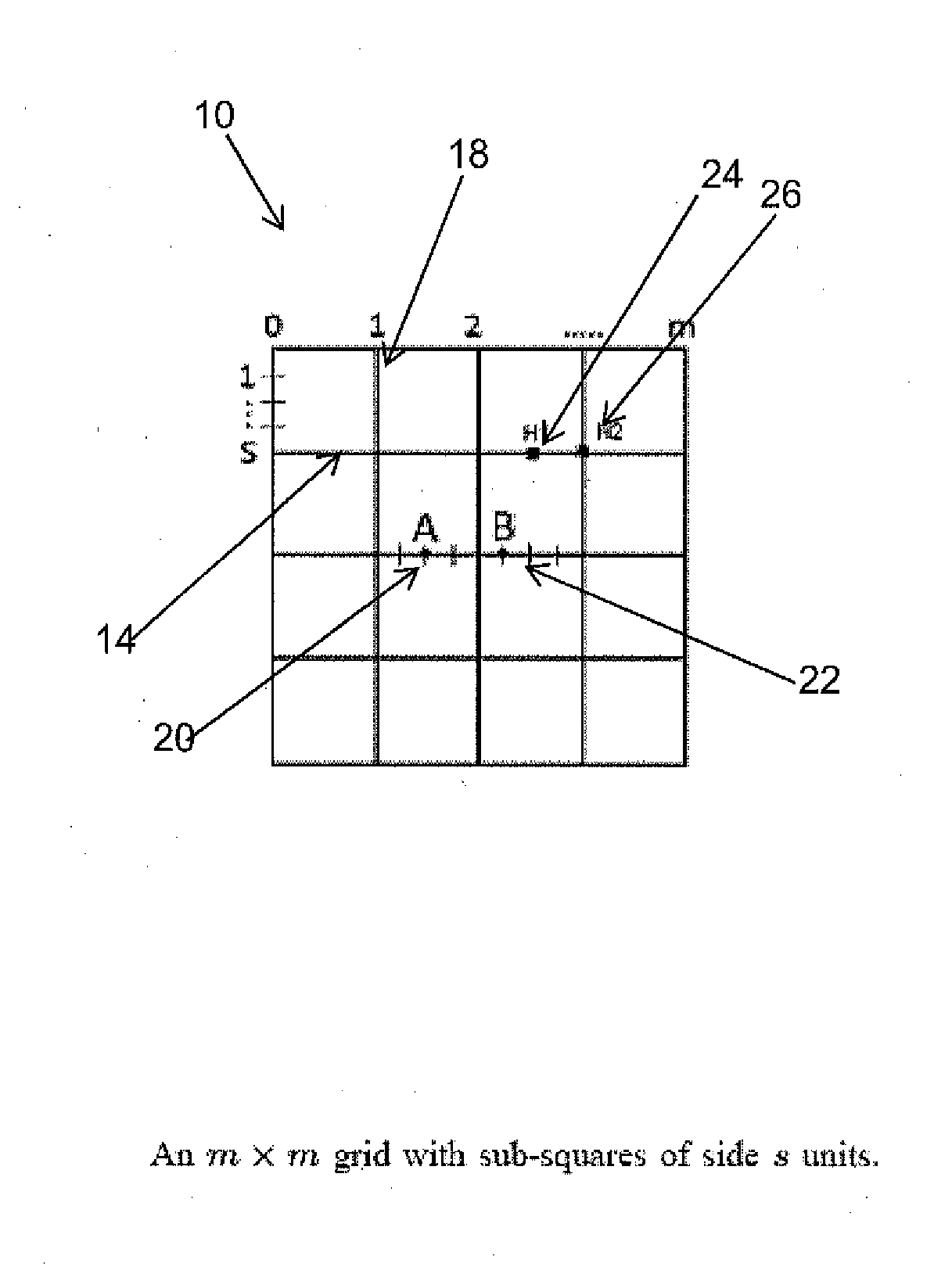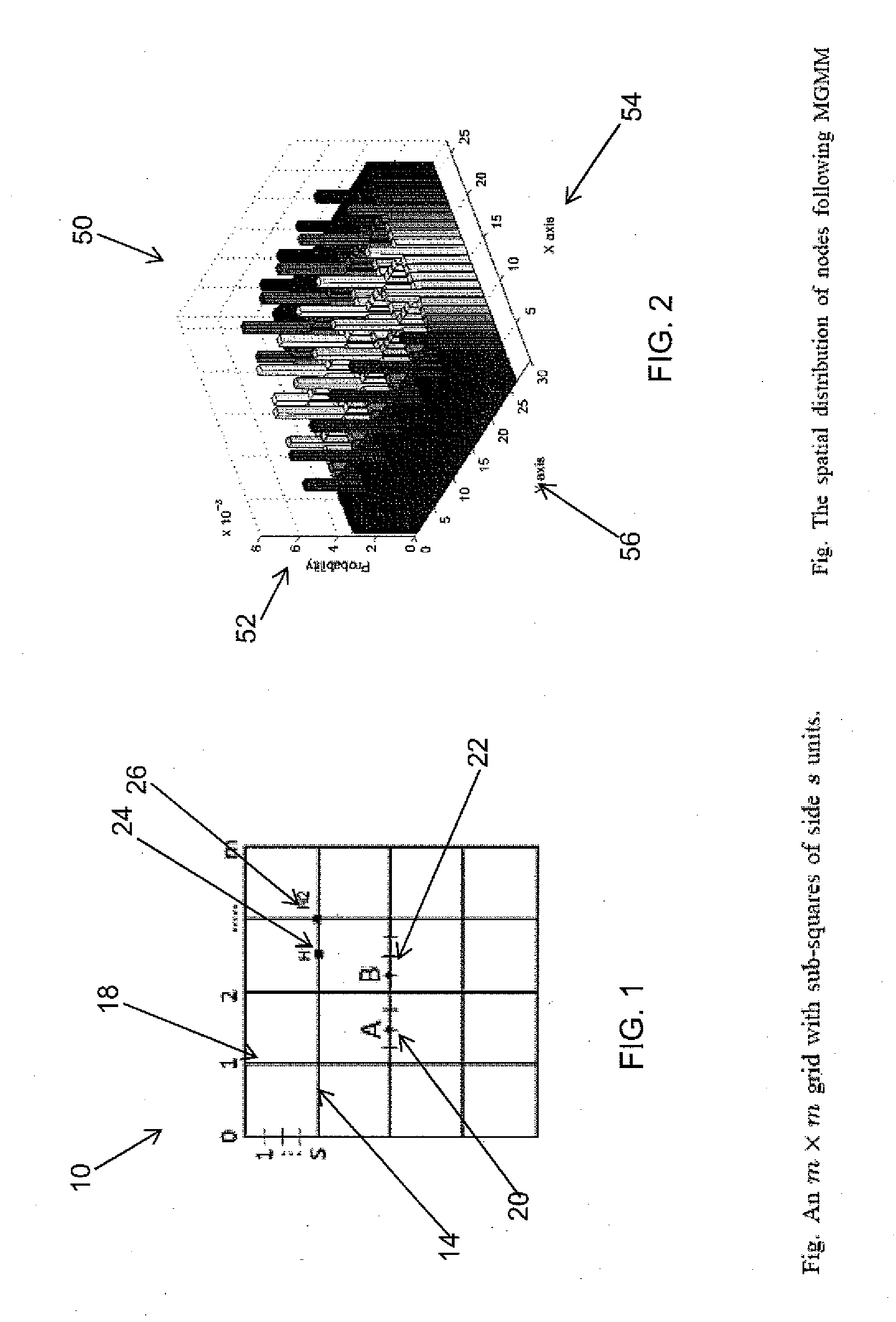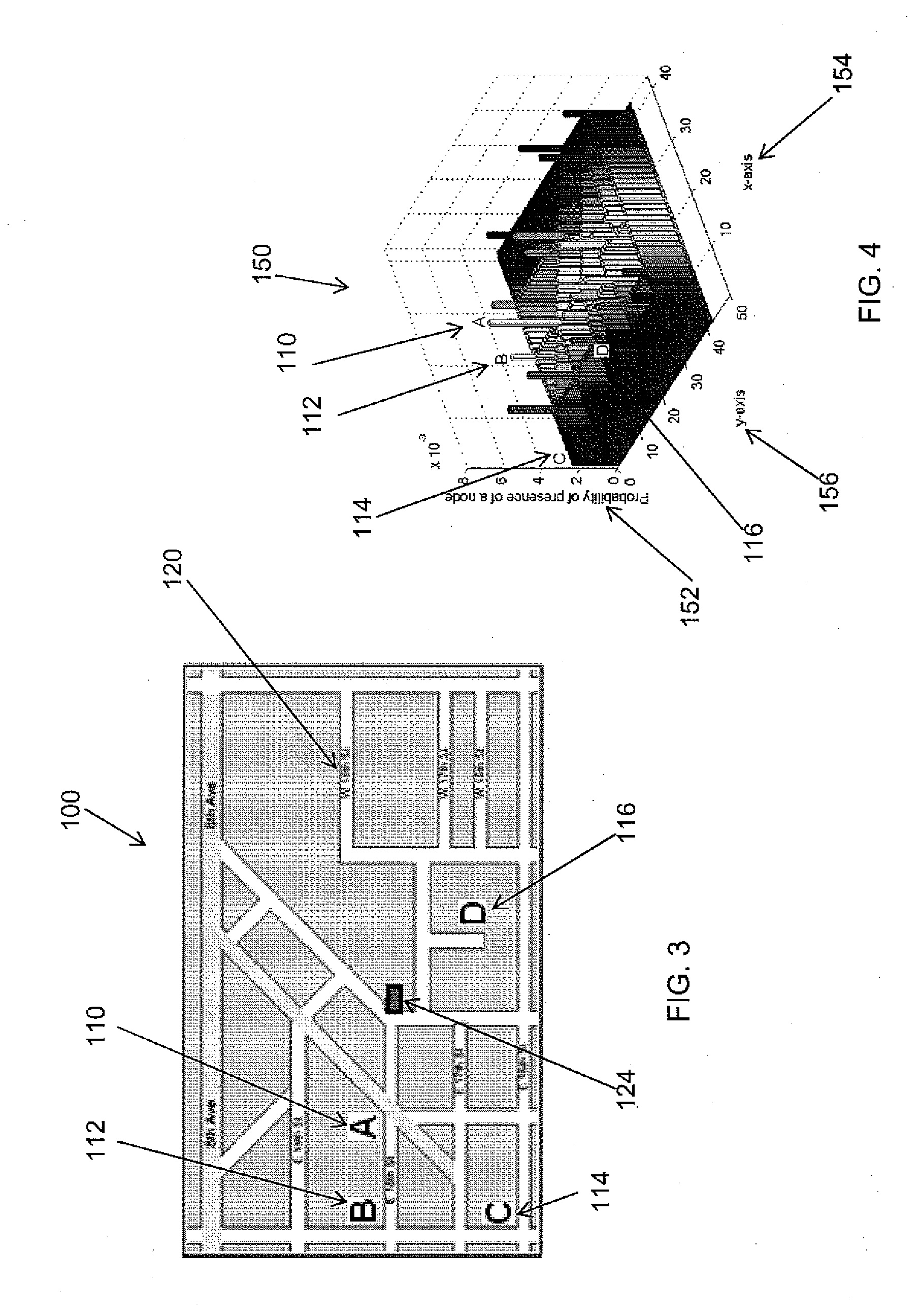Method to model vehicular communication networks as random geometric graphs
a technology of random geometric graphs and vehicular communication networks, applied in the field of mathematical analysis and/or modeling vehicular communication networks, can solve the problems that protocol studies and analysis performed using random graphs or random geometric graphs as mathematical models cannot be used to infer actual properties or conclusions about and the solution of random graphs or random geometric graphs cannot be reliably linked to the original vehicular network
- Summary
- Abstract
- Description
- Claims
- Application Information
AI Technical Summary
Benefits of technology
Problems solved by technology
Method used
Image
Examples
Embodiment Construction
[0026]A vehicular network is a communication network between vehicles, wherein the vehicles are capable of communicating with each other. Generally, the present invention includes a method providing a mathematical model representing an abstract vehicular network. In one embodiment, designated network servers may be physically located proximate to the vehicles or a specified distance from a vehicle, and have a communication distance depending on the wireless capabilities of the transmitting and receiving devices. Further, properties inferred during an analysis of an associated mathematical model can be used for various purposes, including, for example, protocol solution comparison, and improved protocol design. For instance, any communication protocol implemented between the vehicles in the vehicular network can be designed and analyzed in, for example, a random geometric graph. In the random geometric graph, all network elements are vertices of a graph, wherein two vertices are conn...
PUM
 Login to View More
Login to View More Abstract
Description
Claims
Application Information
 Login to View More
Login to View More - R&D
- Intellectual Property
- Life Sciences
- Materials
- Tech Scout
- Unparalleled Data Quality
- Higher Quality Content
- 60% Fewer Hallucinations
Browse by: Latest US Patents, China's latest patents, Technical Efficacy Thesaurus, Application Domain, Technology Topic, Popular Technical Reports.
© 2025 PatSnap. All rights reserved.Legal|Privacy policy|Modern Slavery Act Transparency Statement|Sitemap|About US| Contact US: help@patsnap.com



